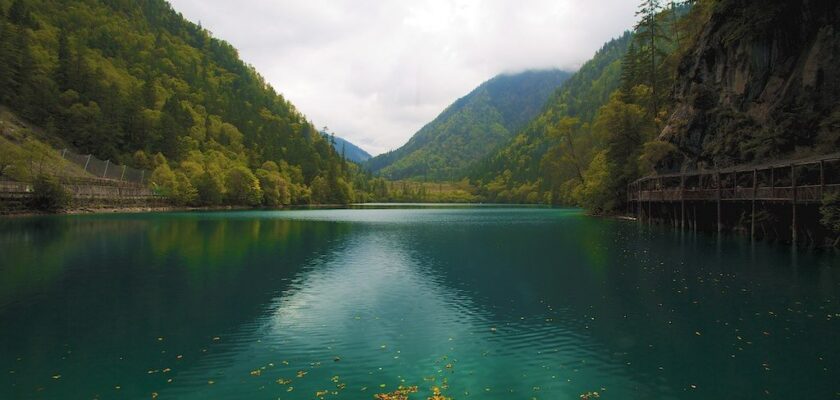Jiuzhaigou Valley
Jiuzhaigou Valley is an extraordinarily beautiful place on the eastern edge of the Tibetan Plateau. Nature has created true wonders of water and limestone, algae and bacteria, and adorned its creation with mosses, lichens and many hundreds of plants in captivating abundance and splendor. Jiuzhaigou Valley is generally understood to be two nature reserves at once – Jiuzhaigou itself and Hualong Nature Reserve. In turn, Jiuzhaigou consists of three other smaller valleys.
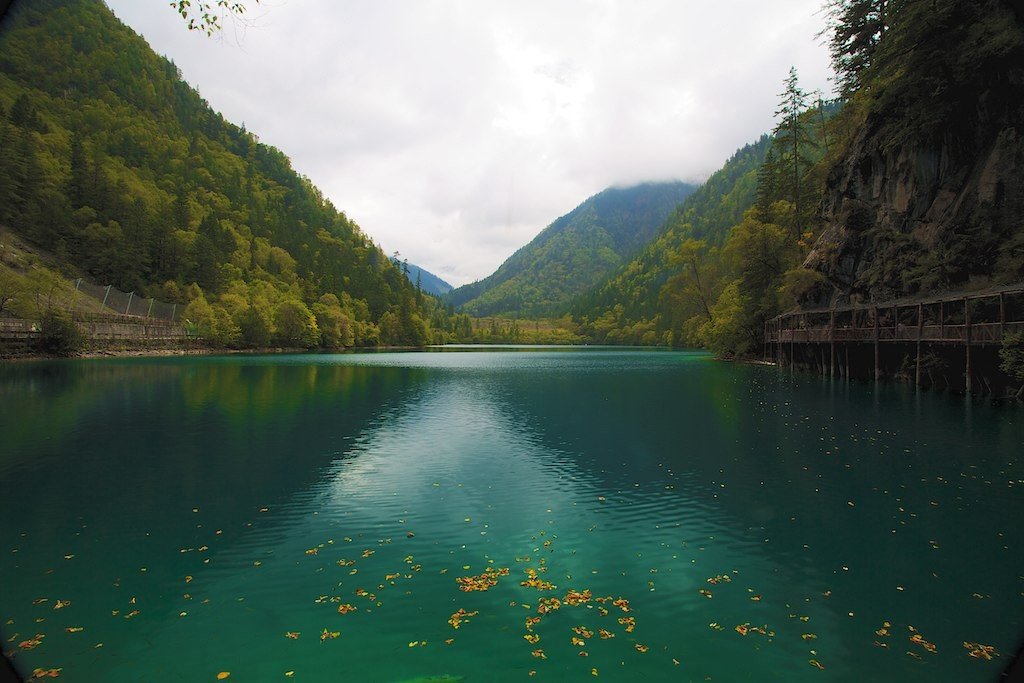
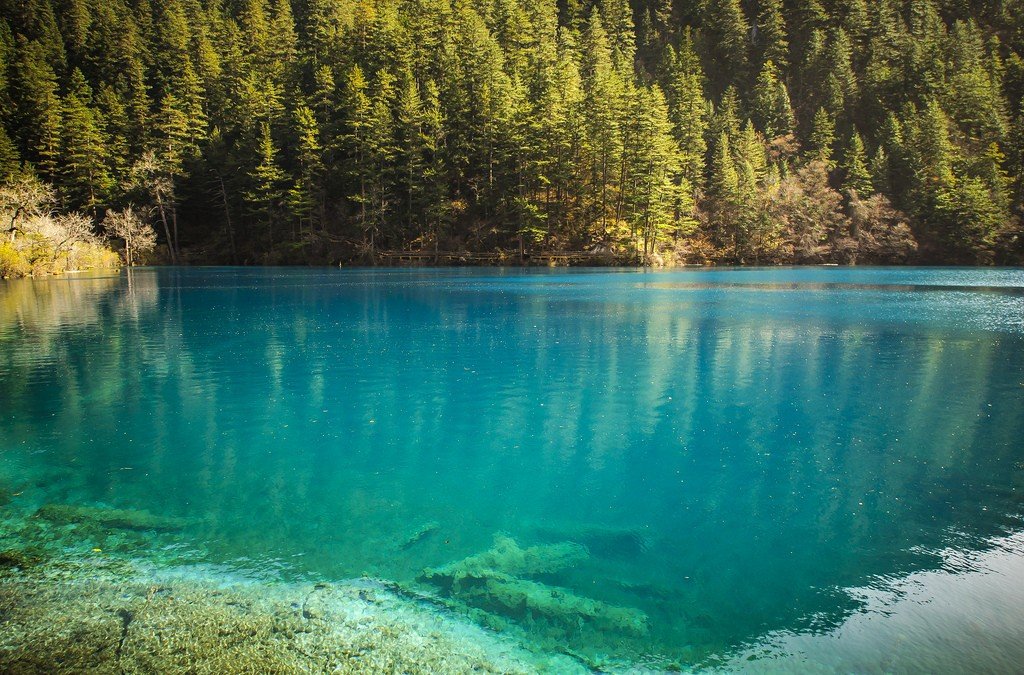
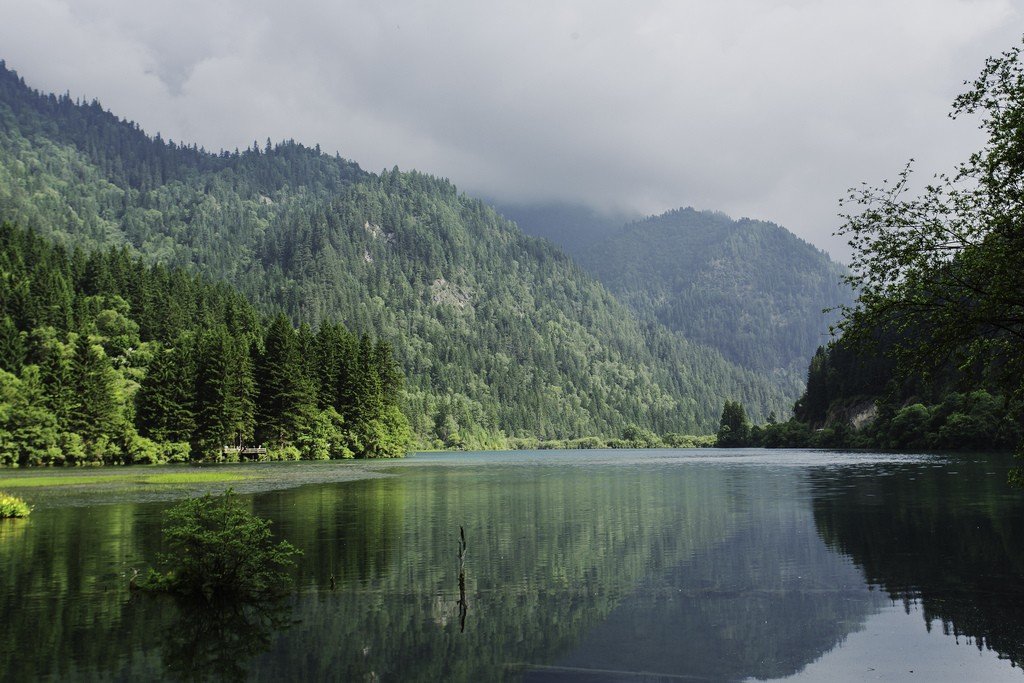
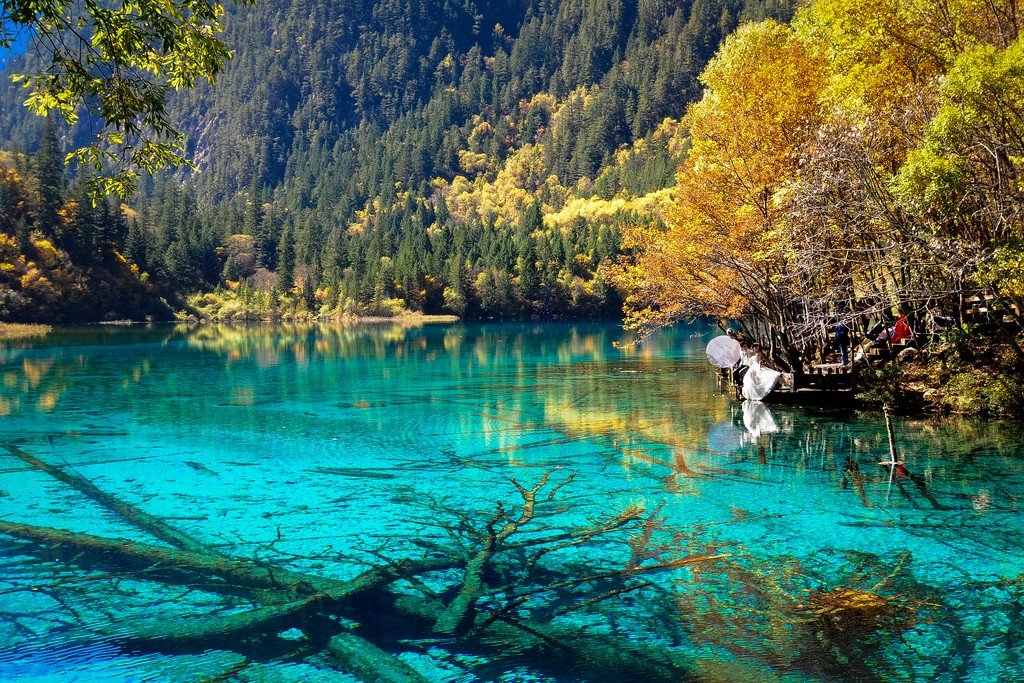
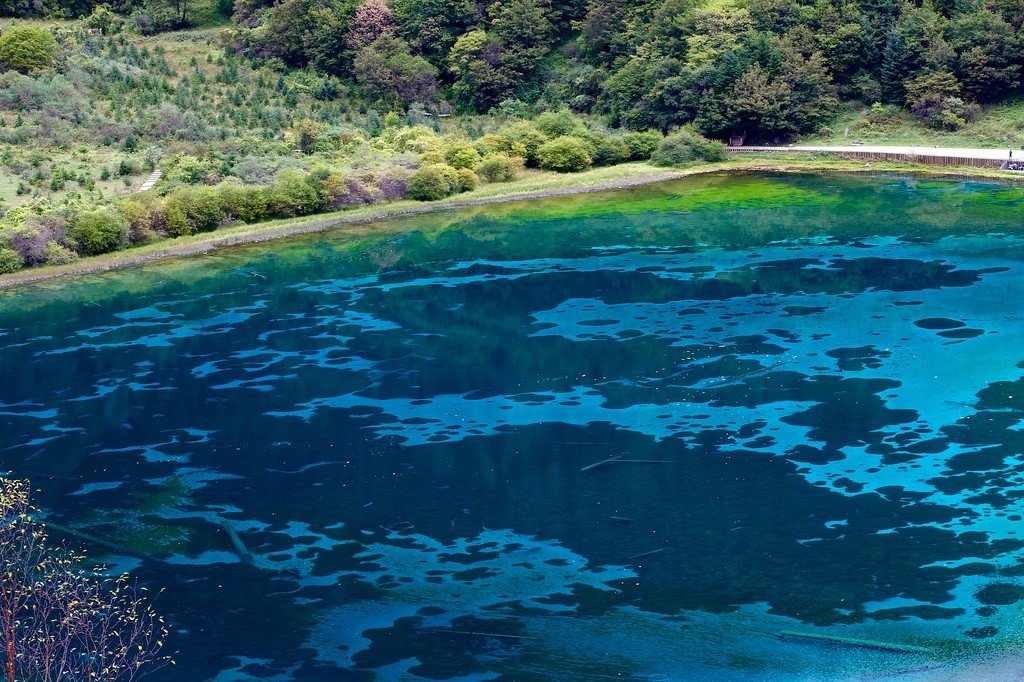
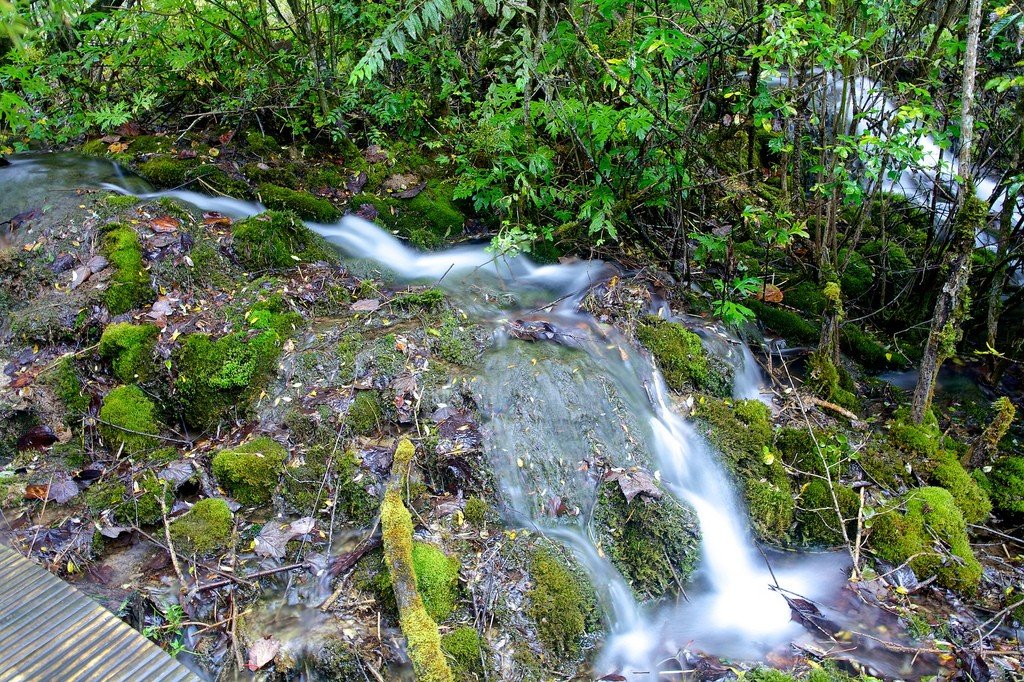
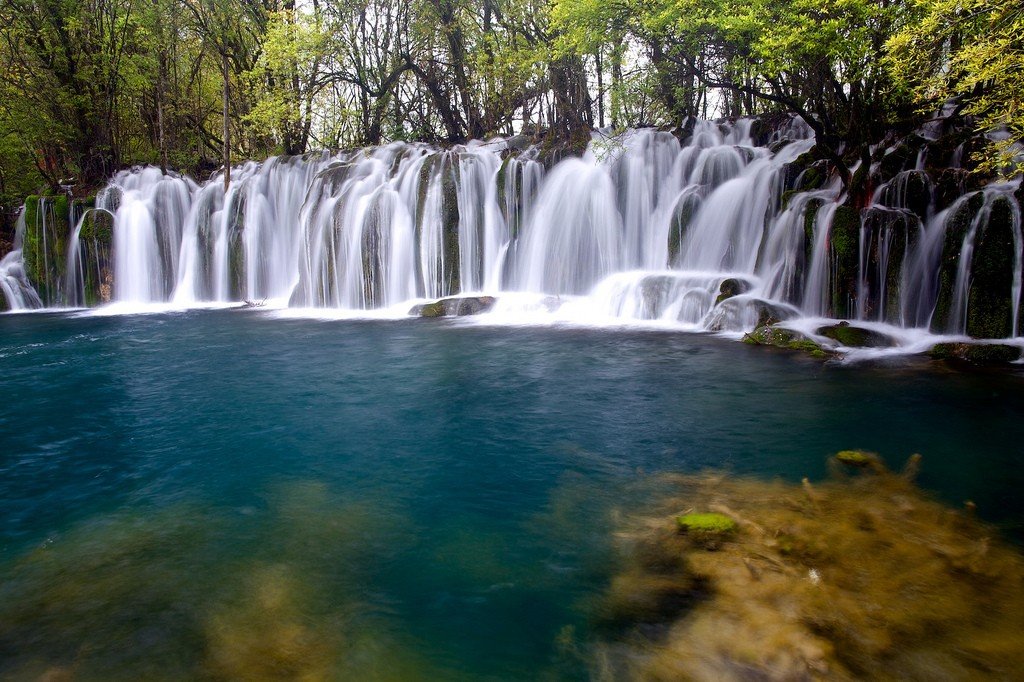
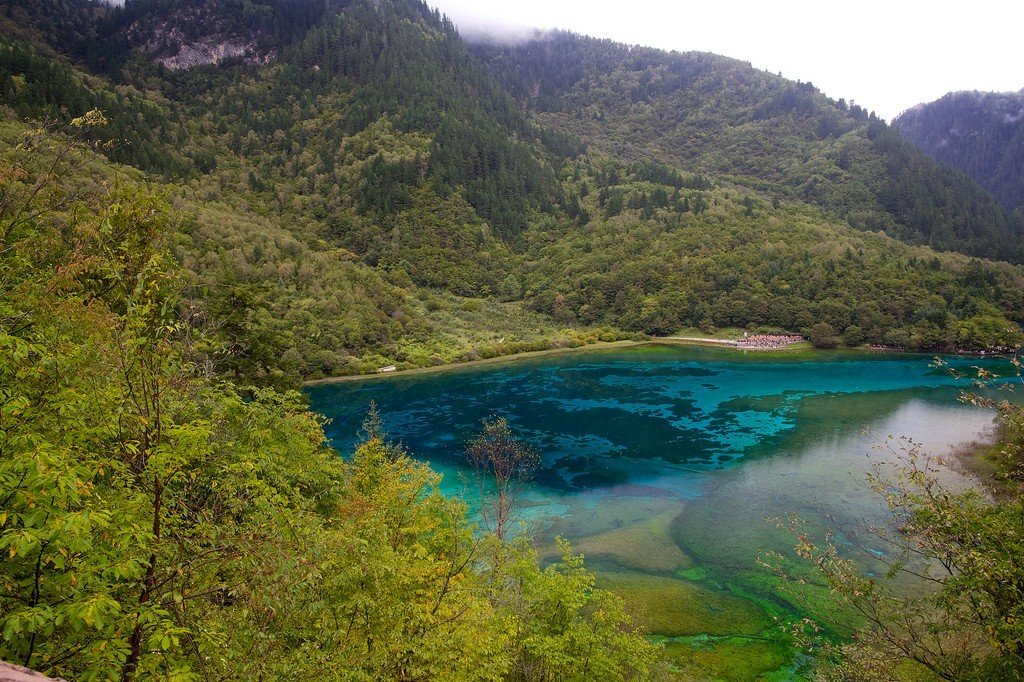
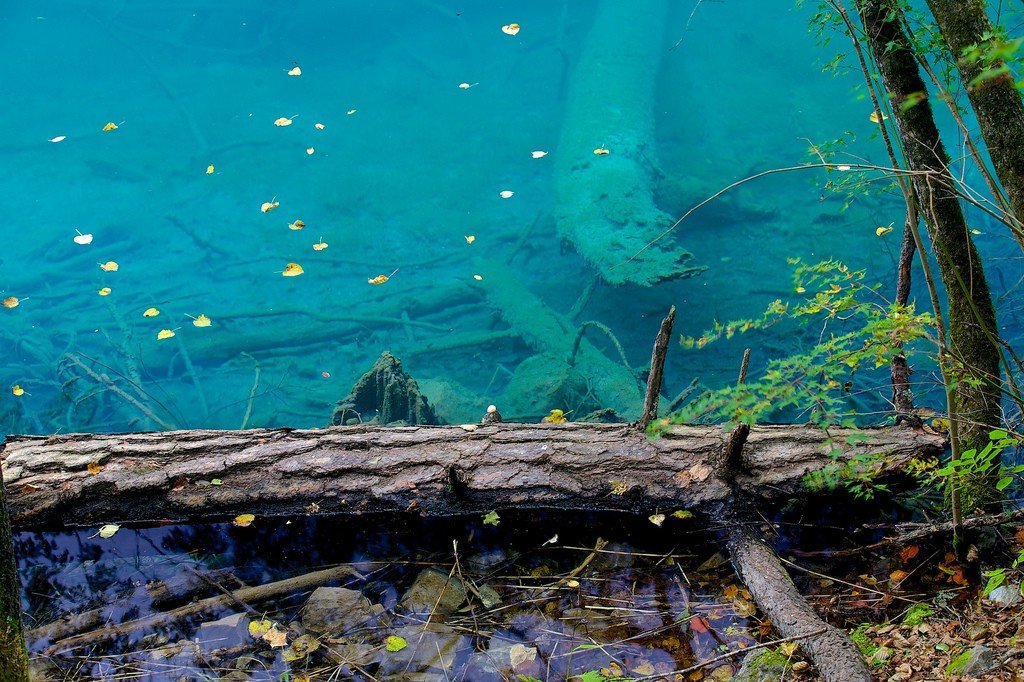
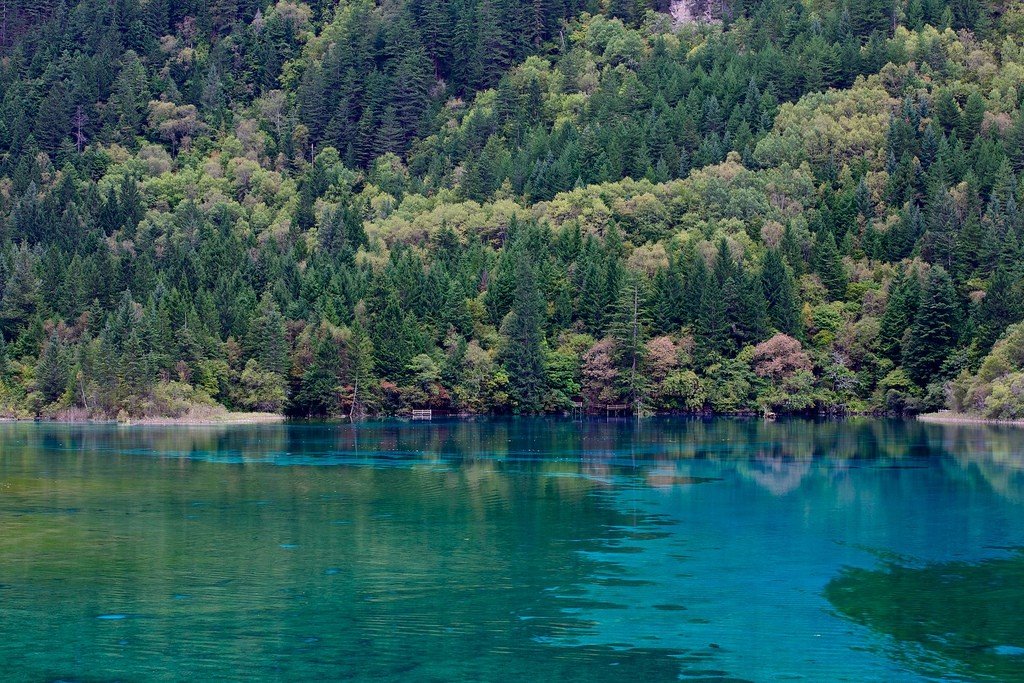
General Information
While the small Huanglong Valley can be walked in one morning or one evening, the vast valleys of Jiuzhaigou will require at least one day, and that’s if you decide to walk less on foot and take the bus more. If you want to avoid the crowds, it is better to walk a lot – then it will take at least two days, and only then will you really enjoy the local beauty.
.The Jiuzhaigou and Huanglong Valleys have been a UNESCO World Heritage Site since 1992. They border each other and are best explored together – however, to get from one place to the other requires a 120km drive. That’s not much when you consider that it takes a whole day to get here from Chengdu, plus, unless you choose to fly, you’ll need an overnight stay.
.Huanglong
The name Huanglong Nature Reserve means Yellow Dragon in Chinese. Only a small part of the 700 square kilometers can be explored. The main feature of these places is the amazing travertine (limestone tuff) landscapes, including numerous lakes, waterfalls, springs, rapids, and caves. The small lakes are painted with algae and bacteria in a variety of colors. The higher you climb, the more varied the play of colors, to which the sky, clouds, and foliage reflecting on the surface of the water contribute. The scenery is completed by the view of “Snow Treasure Peak” (Xuebao Ding), which sparkles towards the visual axis of the valley with its eternal snows.
.Arrival
Even those arriving by plane can enjoy the view of the mountains: from the small town of Chuanzhusi, where the road to Huanglong branches off from the road to Jiuzhaigou, the path first leads over a snow-capped pass at 4,200m, with a distant view of the surrounding area and then over 1,000m down serpentines to a small hotel village with large parking lots and the entrance to the main area of the reserve.
.
Exploration
Up and down you have to walk a total of about 8.5km, most of the distance is on paved wooden paths so that you can keep your feet dry in all weathers. The whole area is well-maintained, with signposts in three languages; it is almost impossible to get lost here. You should take some provisions with you. There are several toilets, and those who can’t walk far can order a stretcher.
.Waterfalls
You have to walk a short distance through the forest, then a cascade of ponds starts. They are green in color due to the natural excess of mineral components that promote the growth of algae. This first group of ponds ends with the green waterfall Feibuliukha, which is 60 meters wide and 10 meters high. Above the ponds, you will pass under the yellow-colored sign and come to the ochre-yellow Xishendong Waterfall, descending from a grotto from a height of 7m. It is said that a certain virgin spent a night in this grotto and came out pregnant in the morning. Despite China’s “one-child policy”, the entrance to the grotto is not closed.
.Bonsai Ponds
On the east side of the waterfall (on the left if you go uphill) you can reach the Bonsai Ponds (Pengjingchi) dominated exclusively by dwarf trees and shrubs.
.Yellow Dragon
The Yellow Dragon is the name of the mentioned travertine surface of the valley, which ends with an ochre-yellow waterfall. It is 2.5 km long and 50 to 100 meters wide. Due to the chemical reaction of rocks with water, a carbon dioxide-saturated, endless sequence of miniature rapids is formed: these are the scales on the back of the yellow giant animal. Since the Chinese dragon lives in water, it is only natural that the whole valley bears its name.
The ponds that rival each other in their variegation at the southern end of the “yellow dragon” valley do just what their name suggests. This third group of spacious travertine terraces surpasses the previous ones in their colorfulness.
.Temples
A long distance without travertine terraces follows, after which one reaches the Buddhist Yellow Dragon Temple (Huanglungusa), where one can pay one’s respects to the “Immortal Yellow Dragon”. According to Tibetans living in this area, a sage once had a dream that a flood was threatening the area. He warned all the inhabitants to move to a safe place. And indeed, a devastating flood followed. It became clear that the sage was “immortal Yellow Dragon” and then he as the human embodiment of the water miracle-beast, bringing both happiness and ruin, dedicated this Temple. Five colors? That’s not an exaggeration. Here, at the Pond of Five Colors (“Utsaichi”), right by the Temple of the Yellow Dragon, the magical nature shows its gift of dramatist and writes the climactic scene of your walk: the ponds glow with turquoise, white, ice blue, poison yellow, green light: according to the calculations of the park administration, six hundred and ninety-three color variants. It’s incredible how colorful the clear water can be! Opening hours: daily. 7.00-18.00 (working day is shortened in winter).
.Jiuzhaigou
It seems that in this remote, karst mountainous region, nature wanted to show all that it can do. More than a hundred lakes and ponds, partly clear, partly colorful, waterfalls and rapids, travertine areas, floating islands, almost more plant species than in all of Europe – amazing phenomena in both large and small know no bounds.
Inspection
The Tibetan-inhabited Jiuzhaigou Valley consists of three separate valleys, with the upper two forming something like the Latin letter Y together with the lower one. The 600-square-kilometer area has lower absolute altitudes than the Huanglong Nature Reserve. The entrance to this area (i.e., the exit from the valley) lies at an elevation of 1990 m; from there, the valley floor rises relatively gently to an elevation of over 3000 m. The tops of the mountains reach 4,600 m. All three valleys are provided with asphalt roads with a total length of 55 km. Apart from the occasional expensive cars belonging to the bonzes (i.e. officials), the park’s buses are exclusively owned by the park, for which it is worth buying a day ticket. The park administration has paved comfortable and well-maintained boardwalks in all the valleys on the non-road side, which are not used by crowds because Chinese tourists usually come to Jiuzhaigou for only one day and don’t have time to hike. Opening hours: daily. 7.00-18.00.
From November 16 to the end of March, the upper valleys of Zhuzhaigou (from Tianhehai Lake) are closed to visitors.
.Shuzhenggou Valley
This is a 14 km long main valley with a wide entrance area (selling entrance tickets and souvenirs, public gardens, parking lots), where thousands of visitors throng from sunrise. The first section to Pengjintan is best traveled by bus.
.Baojingyan Rock
Jiuzhaigou’s first attraction is a perfectly smooth 400-meter-high rocky wall that visually walls off the edge of the valley like a giant “spirit wall” – the Treasure Mirror Rock. As the locals say, the “spirit-predoca of the mountains” through this magical mirror forever drove an evil demon under the mountain. At one time the monster had pursued a mountain fairy of unspeakable beauty. The unfortunate creature had to suffer for ten thousand years under the rule of the brute until the spirit-predoc could defeat the villain. In doing so, however, the fairy’s precious mirror cracked and split into one hundred and eight pieces-the one hundred and eight lakes of Jiuzhaigou.
.Penjingtan
The first water attraction in a long line of its brethren: a travertine zone in which dwarf-shaped plants grow due to lack of nutrition. At the lower end of the zone, near a Tibetan water mill, you can cross to the other side of the valley and traverse the next few kilometers on a boardwalk.
.
Four Lakes
Above the Penjingtan area follows the reed-covered lake, Shuanglunhai, which is 2 kilometers long. Even higher up is the “Two Dragons” lake: it owes this name to the winding limestone reefs. According to one legend, they were evil dragons that constantly sent hail storms to Jiuzhaigou until a Tibetan king managed to defeat them and put them on a chain deep at the bottom of the lake for eternity. Above the next rapids is the Iskr Lake – Hohuahai. When the morning sun chases away the mists, its light makes the waves sparkle. At the next lake, you will meet the dragon again: the “Sea of the Lying Dragon” – Wolunhai is also home to limestone deposits.
.Nineteen Ponds of Shunzhengcunhai
And so you approach a five-kilometer-long series of travertine dams in which the water forms rapids; and these dams are overgrown with vegetation, with water flowing through them. In two places wooden planks lead across the dikes to the other side. Tibetan watermills can be seen near one of the ponds. The upper end of this composition is formed by the 15-meter-high Shuzhengpubu Waterfall, which feeds the thick layers of moss on the rocks with its foaming waves.
.Xinyuhai and Laohuhai (Tiger and Rhinoceros) lakes
The next two lakes in the Jiuzhaigou Valley have somewhat strange names. The upper one, at an altitude of 2,315 meters, covering an area of 20 hectares, is the largest in the Shuzhenggou Valley. Its name reminds of another legend: once a certain Tibetan lama riding a rhinoceros appeared here. This lama was deathly ill, but after drinking water from this lake, he was immediately healed..Nozhilanpubu Waterfall
Here, at Nozhilanpubu Falls, the two upper valleys merge. It plunges down from a height of 20 meters. The western of the two upper valleys (Zhijiegou Valley) is open to visitors for 17 kilometers.
.
From Jinghai Lake to Wuhuahai Lake
Above Nojilanpubu Falls there are eighteen more travertine cascades, they are fed from the “Mirror Lake” – Jinghai, which is protected on all sides and at times fully justifies its name. At its upper tip, a boardwalk starts at the top of the lake, which you have to walk along. The first stop is the Zhenzhutanpubu Waterfall, 200 meters wide and 21 meters high, which plunges down a narrow gorge. Past the waterfall, the path leads upwards. The water runs swiftly down a travertine section, which the Chinese have called the “Pearl Bank”. There is also a wooden planking across its surface. If you step on it, you immediately understand where the poetic name comes from: the water that runs down through an area overgrown with dwarf shrubs and algae is sprayed into drops that shine like pearls. The fact that plants can survive for a long time in the midst of turbulent water, which washes away all humus, is a peculiarity of the terrain, something that can only be observed in rare places all over the world. If you then return to the original trail and follow it further up, you can reach the Lake of Five Colors – Wuhuahai, which algae has painted in various colors – the best view is from the elevated road, which you can return to here.
.Zazhu Temple
At the Treasure Mirror Rock, a path leads to the neighboring Zazhu Valley. There on the right is the most significant Tibetan temple in all of Jiuzhaigou.
Xunmaohai Lake and Xunmaohaipubu Waterfall
If you don’t transfer to the bus, you need to use the hiking trail on the other side and beyond. It leads to Jiuzhaigou’s highest waterfall, Xunmaohaipubu; 78 meters high, the waterfall is divided into three steps. It is true that most visitors don’t see any water here at all: the waterfall only reveals itself during the summer rainy season. At other times, it seeps in small streams from above from the Panda Lake Xunmaohai (2,587 meters above sea level) located above. It is said that panda bears were actually seen near this lake before, in the 1970s.
.Jianzhuhai Lake
Next, a hiking trail leads along the side of the valley that does not face the road to the Jianzhuhai Lake of Sagittarius Bamboo with a beautiful waterfall, below which you can walk along a wooden deck. At the upper end of the lake, road access reappears. The next 9.5 km is not as interesting, so again here the bus is at your service.
.Grass Lake, primeval forest
Two more interesting lakes form the upper end of the circle of lakes: Tianhehai Lake (“Swan Lake”) and Caohai Lake (“Grass Lake”), Both are densely covered with aquatic vegetation, and whole grassy islands float on the waves. Finally the road ends at a primitive forest, into which you can go a little deeper and marvel at the exceptional variety of species.
.
Jiechawagou Valley
The eastern of the valleys is characterized by its erosional karst surface, so it is water poor in some areas. The frequency of landmarks, over 18 km, is much less than in the other two. At the entrance to the valley, there is a complex of buildings on the left: a tourist center with restaurants and stores. It is recommended to take a bus from here to the end of the valley and then walk part of the way.
.Changhai Lake
As you drive up the valley, you pass two lakes – or two dry large depressions: water only comes here in summer and early fall, when it rains a lot. After that, the water seeps into the soil. In the upper reaches of the valley, at an altitude of 3060 meters, there is the “Long Lake” (Changhai), the largest in Jiuzhaigou, fringed by dense coniferous forests. Many rivers and streams flow into it, but there is no runoff, at least not above ground, as the glacial moraine, tightly damming it. Often cast in all the colors of the rainbow, the surface of the lake gives it something mysterious. Tibetans say that sometimes monsters emerge from the water. In winter, a layer of ice up to 60 centimeters thick forms on the lake.
.Utsaichi Lake
A knowledgeable hiking trail from here leads down into the valley to the last natural wonder in Jiuzhaigou – the “Five-Colored Lake”: it measures 40 x 25 m and is 6 m deep. The lake’s intense coloring of blue and turquoise would seem artificial if the water were not completely transparent.
.Tips
- Arriving in Jiuzhaigou and Huanglong by airplane means missing out on a great deal. Traveling by train through the gorges in the valleys higher and higher up the mountains, seeing ancient villages, unique peasant architecture and visiting the fortified city of Sunpan is a wonderful prelude to seeing the local sights, and it would be a pity to miss it, even for comfort reasons. At Huanglong, you can only avoid the crowds if you arrive early in time for the gate opening. In Jiuzhaigou, that won’t help either. It will only save time to be able to wander along the best boardwalks away from the main roads..
- Overnighting in Huanglong and Jiuzhaigou is not recommended due to the poor standard of the touristhouses there. It is better to leave early in the morning from Sunpan or Chuanzhusa.
How to get there
Thanks to the airport located between Jiuzhaigou and Huanglong, it is now possible to get to these parts quickly, so the whole trip from Chengdu requires only two and a half days if one spends a whole day in Jiuzhaigou. Anyone who stays two days and intends to travel by land transportation should plan on five days for the entire trip. Because of the difficult transportation conditions, especially the connection to Huanglong, we strongly recommend booking the entire tour in Chengdu (Chengdu, Sichuan International Travel Service S. 172). The distance from Chengdu to Jiuzhaigou is 460 kilometers. It is best to overnight in Songpan or if possible in Chuanzhusi (near the airport), on the way back in Maoxian if you leave in the morning. The road leading to Huanglong through the pass may be temporarily closed in winter.
.Excursions to surrounding places
A true adventure, but well-organized: multi-day horseback rides into the scenic mountains of northern Sichuan.
.Contact Shun Jiang Horse Treks, bureau in front of the north gate in Songpan.
.Tel: 08 37/723 11 61, 723 12 01.Manager Guo Shan speaks English.
